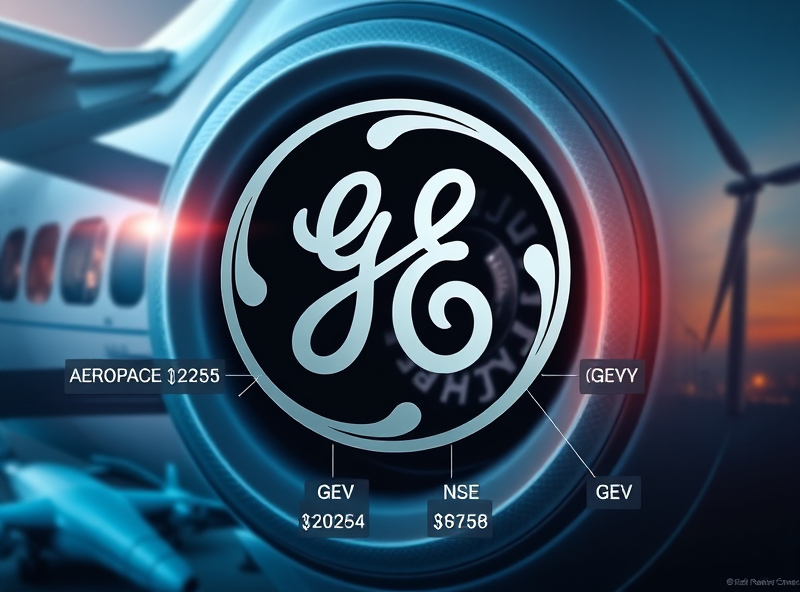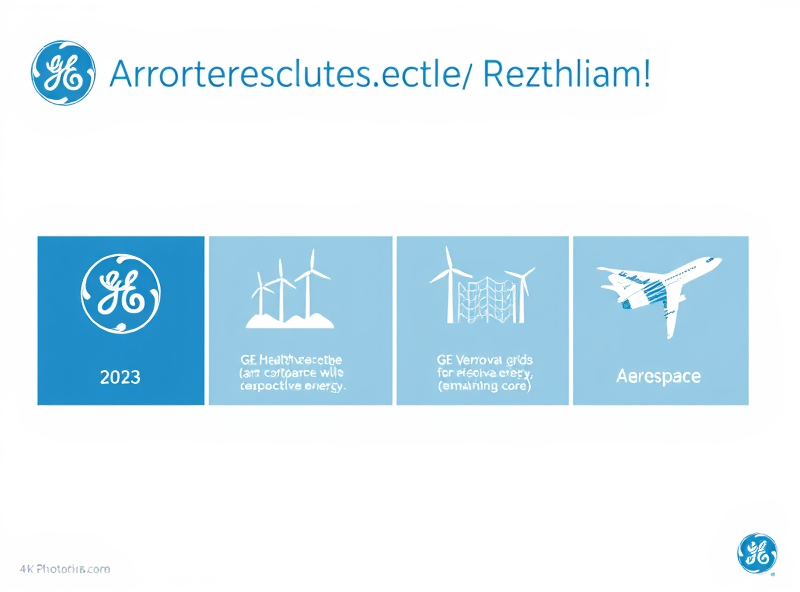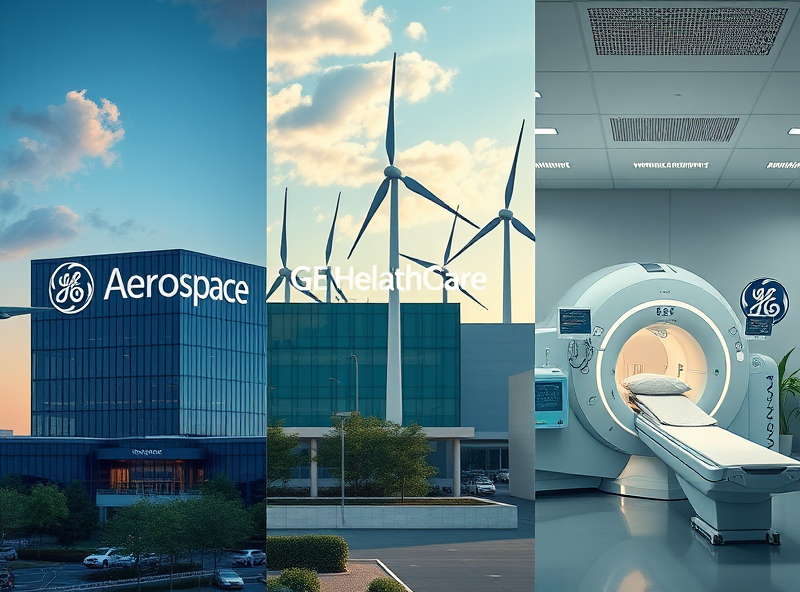
GE Breakup Explained: What It Means for Investors
GE Splits to Focus on Core Businesses: Investment Opportunities and Outlook

After more than a century as one of the world’s most iconic conglomerates, General Electric (GE) has officially split into three independent companies, each focused on a core industry: aviation, healthcare, and energy. This historic move, finalized in 2024, marks the end of GE as a single corporate entity and the beginning of a new era for investors and industry stakeholders.
The breakup was driven by a need for greater operational focus, improved financial transparency, and the ability to respond more nimbly to market demands. Here’s how the split unfolded:
1. GE Aerospace: This unit retains GE’s legacy in aviation and now operates as a standalone company. It focuses on jet engines, aerospace systems, and defense technologies. With global air travel rebounding and defense spending increasing, GE Aerospace is positioned for long-term growth.
2. GE HealthCare: Spun off in early 2023, GE HealthCare now trades independently and concentrates on medical imaging, diagnostics, and patient monitoring technologies. The healthcare sector’s resilience and ongoing innovation make this a strong play for investors seeking stability and growth.
3. GE Vernova: The final piece, GE Vernova, includes GE’s energy businesses, such as renewable energy, power, and digital grid solutions. As the world transitions to cleaner energy sources, GE Vernova aims to lead in decarbonization and sustainable infrastructure.
For investors, the breakup offers a chance to invest in more focused, agile companies with clearer financials and strategic goals. Each new entity is better positioned to innovate and compete in its respective market.
If you’d like to explore more about GE’s transformation, you can visit their official investor relations page: https://www.ge.com/investor-relations
The End of an Era: GE Divides into Three Independent Giants

General Electric (GE), once a symbol of American industrial might, has undergone a historic transformation. In 2021, GE announced it would split into three separate publicly traded companies, each focusing on aviation, healthcare, and energy. This decision marked the end of GE’s era as a diversified conglomerate and was driven by the need to streamline operations, reduce debt, and unlock shareholder value.
Here’s a clear timeline of GE’s corporate restructuring and spin-offs:
– November 2021: GE officially announced its plan to split into three companies.
– January 2023: GE Healthcare became the first spin-off, trading independently on the Nasdaq under the ticker symbol GEHC. The company focuses on medical imaging, diagnostics, and patient monitoring.
– Early 2024: GE Vernova, the energy division, is expected to spin off next. It will focus on renewable energy, power, and digital grid technologies.
– 2024 (post-Vernova spin-off): The remaining company, GE Aerospace, will continue as the core business, focusing on jet engines and aviation services.
For investors, this breakup presents a unique opportunity. Each of the three entities will have a clearer operational focus, more agile management, and tailored capital allocation strategies. This could lead to better performance and more transparency for shareholders. Additionally, it allows investors to choose exposure to specific industries—healthcare, energy, or aerospace—based on their individual risk tolerance and market outlook.
This move reflects a broader trend in corporate America: large conglomerates are finding it increasingly difficult to manage unrelated businesses under one roof. GE’s restructuring could serve as a blueprint for other companies considering similar paths.
For more details, you can refer to GE’s official investor relations page: https://www.ge.com/investor-relations
GE Restructuring Timeline: Transition to Healthcare, Energy, and Aerospace

When General Electric (GE) announced its decision to split into three separate publicly traded companies—GE Aerospace, GE Vernova (energy), and GE HealthCare—it marked the end of an era for one of America’s most iconic conglomerates. But what does this mean for investors? Let’s take a closer look at how the stock market has reacted and what future value predictions suggest.
Initially, the market responded positively to the breakup news. Investors welcomed the move as a way to unlock value trapped within the sprawling conglomerate. GE’s stock saw a notable uptick after the announcement, reflecting optimism that each independent entity could operate more efficiently and be more focused in its respective industry. According to analysts, the separation allows for better capital allocation, more transparent financial reporting, and targeted strategic planning.
GE HealthCare, which spun off first in early 2023, has already shown promising signs of growth. With the global healthcare market expanding and demand for medical imaging and diagnostics rising, GE HealthCare is well-positioned to benefit. GE Vernova, focusing on renewable energy and power, is expected to attract ESG-focused investors, especially as the world transitions toward cleaner energy. Meanwhile, GE Aerospace remains a stronghold, with commercial aviation rebounding post-pandemic and defense contracts providing stability.
Looking ahead, analysts project that the combined value of the three companies could exceed GE’s pre-breakup market capitalization. This is largely due to the market’s tendency to value focused, pure-play companies higher than diversified conglomerates. For long-term investors, this could mean enhanced returns and more strategic investment opportunities tailored to specific sectors.
If you’re considering investing in GE or its spin-offs, it’s important to assess each company’s fundamentals, industry outlook, and management strategy. Diversifying across the three may offer balanced exposure to healthcare, energy, and aerospace sectors.
For a detailed breakdown of GE’s restructuring and financial performance, you can refer to GE’s official investor relations page: https://www.ge.com/investor-relations
GE Unbundled: How the Conglomerate Split into Three Giants

In 2021, General Electric (GE) announced a historic transformation: the breakup of its century-old conglomerate structure into three independent, publicly traded companies. This move marks a strategic pivot aimed at unlocking greater value for shareholders and sharpening each business’s operational focus.
The three entities are:
1. GE Aerospace – Focused on aviation, this unit will handle jet engines and related services. As global air travel rebounds, GE Aerospace is poised to benefit from increased demand for commercial and military aircraft.
2. GE Vernova – This is GE’s energy portfolio, encompassing renewable energy, power, and digital grid technologies. With the global push toward decarbonization, GE Vernova is expected to play a key role in clean energy innovation.
3. GE HealthCare – Already spun off in early 2023, this company focuses on medical imaging, diagnostics, and patient monitoring. It aims to lead in precision health and digital healthcare solutions.
This breakup allows each company to operate with greater agility, attract targeted investment, and respond more effectively to industry-specific challenges. For investors, this means clearer financial reporting, more focused leadership, and potentially higher returns as each company pursues tailored growth strategies.
According to GE CEO Larry Culp, the separation is about “positioning each company to win in their respective sectors.” [Source: GE Official Press Release](https://www.ge.com/news/press-releases/ge-announces-plans-form-three-public-companies)
As we move into this new era, investors should watch how each entity executes its strategic roadmap, particularly in areas like sustainability, digital transformation, and global expansion. The GE breakup isn’t just a corporate restructuring—it’s a signal of how legacy companies can adapt to a rapidly changing world.







